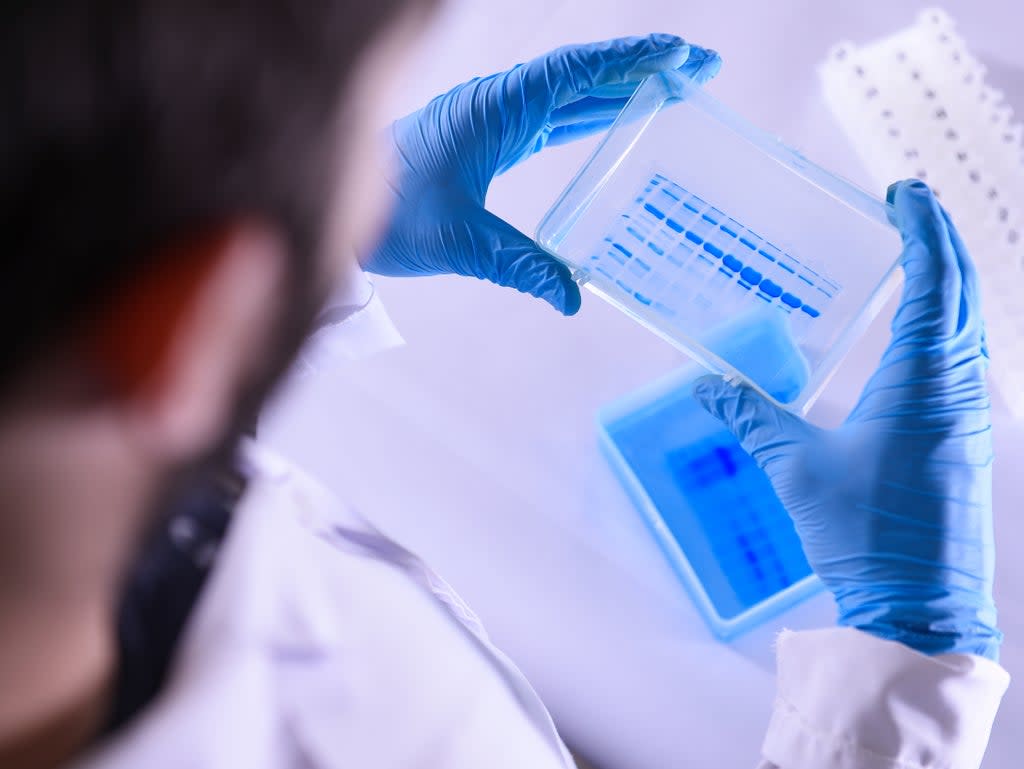Omicron sub-variant BA.2 ‘under investigation’ by UK health officials

A sub-lineage of the Omicron strain has been formally designated as a “variant under investigation” by the UK Health Security Agency.
Some 426 cases of BA.2 have been detected in the UK so far, the UKHSA said on Friday, with the earliest dating back to 6 December.
UKHSA said further analysis will be carried out into BA.2 to determine its characteristics and better understand how it make shape Britain’s epidemic in the weeks to come.
“It is the nature of viruses to evolve and mutate, so it's to be expected that we will continue to see new variants emerge,” said Dr Meera Chand, incident director at the agency.
“Our continued genomic surveillance allows us to detect them and assess whether they are significant.”
The largest number of confirmed cases are in London (146) and the South East (97), the UKHSA said, adding that the original Omicron lineage remains dominant in the UK. “The proportion of BA.2 cases is currently low.”
Early indications suggest BA.2 has an increased growth rate compared to its viral predecessor, though further analysis is needed, UKHSA said.
Whereas Omicron rapidly displaced Delta following its emergence in the UK, BA.2 has yet to follow suit in dominating Omicron, which accounts for the vast majority of cases.
Globally, a total of 8,040 sequences of BA.2 have been uploaded to the global variant database Gisaid since 17 November.
The Omicron sub-lineage has been spreading quickly in places like India and the Philippines, and early signs show it is growing in Germany and Denmark, which has submitted the most sequences to date (6,411).
BA.2 has grown particularly fast in Denmark. It accounted for 20 per cent of all Covid cases in the last week of 2021, rising to 4 per cent in the second week of 2022.
Anders Fomsgaard, a researcher at Denmark’s Statens Serum Institut (SSI), said he did not yet have a good explanation for the rapid growth of the sub-lineage, admitting he was puzzled, but not worried.
“It may be that it is more resistant to the immunity in the population, which allows it to infect more. We do not know yet,” he told broadcaster TV , adding that there was a possibility that people infected with BA.1 might not be immune from then catching BA.2 soon after.
“It is a possibility,” he said. “In that case, we must be prepared for it. And then, in fact, we might see two peaks of this epidemic.”
Other countries that have uploaded more than 100 samples are India (530), Sweden (181), and Singapore (127).
It’s not clear where BA.2 emerged from, though the first cases were recorded in the Philippines.
Nor is it known whether the sub-lineage causes more severe disease than the original Omicron variant. “Data is limited and UKHSA continues to investigate,” said Dr Chand.
Tom Peacock, a virologist at Imperial College London, speaking to Yahoo News, said there is “likely to be minimal differences in vaccine effectiveness against BA.1 and BA.2.”
In a statement, the UKHSA said: “As is routine for any new variants under investigation, UKHSA is carrying out laboratory and epidemiological investigations to better understand the characteristics of this variant.
“We will continue to monitor this situation closely and recommend appropriate public health measures if needed.
“More detail will be available in UKHSA’s regular Variant Technical Briefings.”
The sub-variant does not carry a specific mutation present in Omicron that was used as a proxy to first track and compare its early spread against Delta last month.

